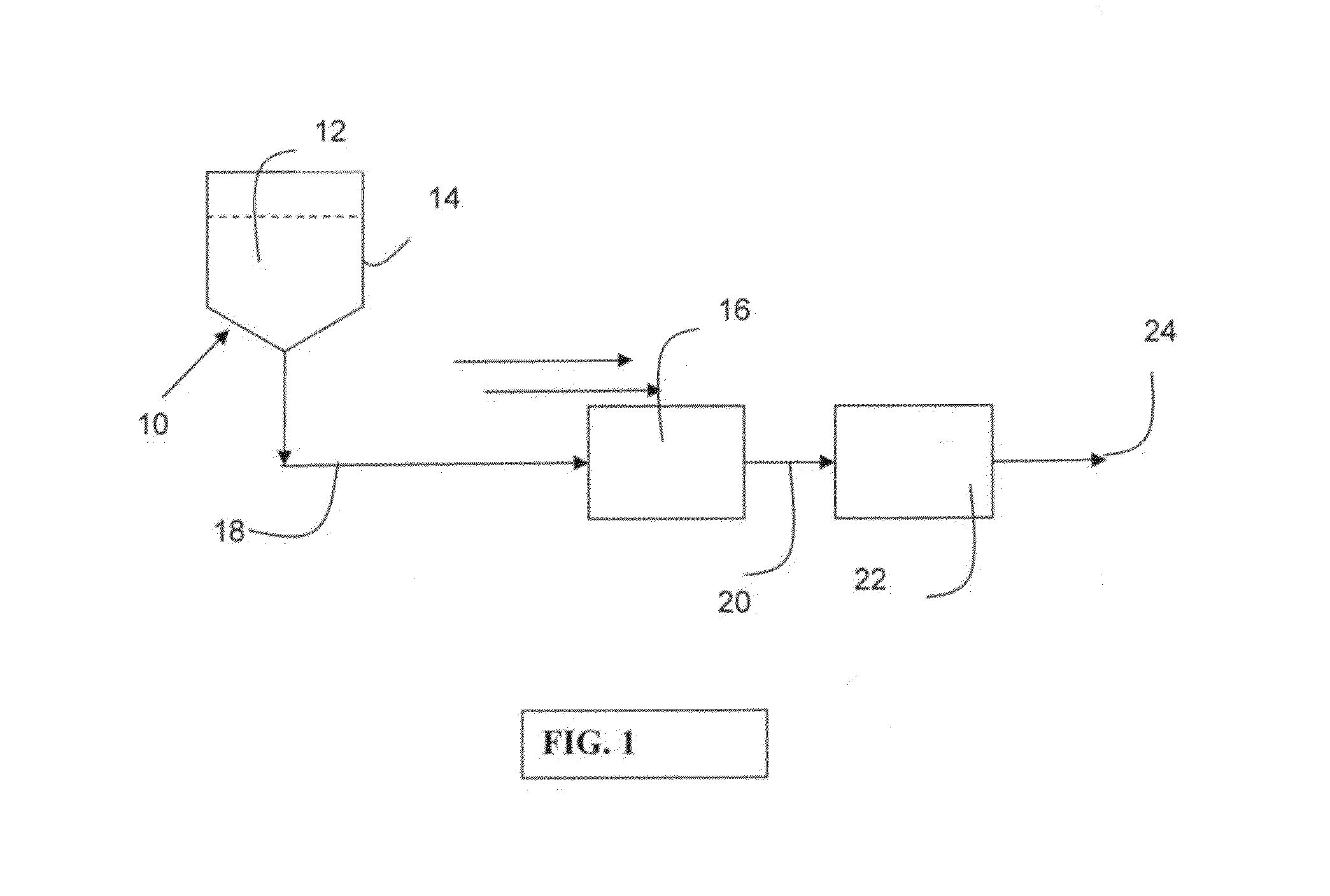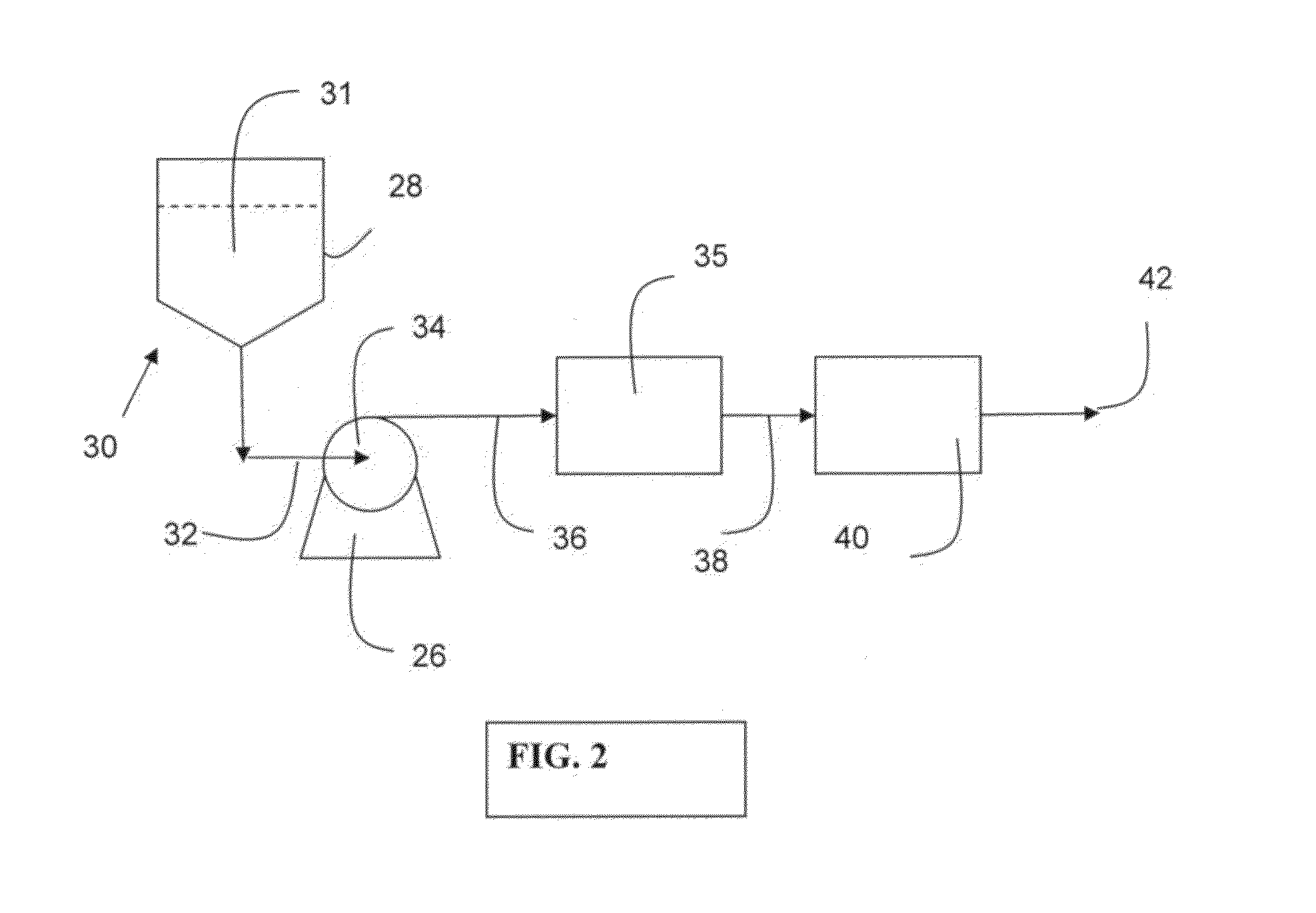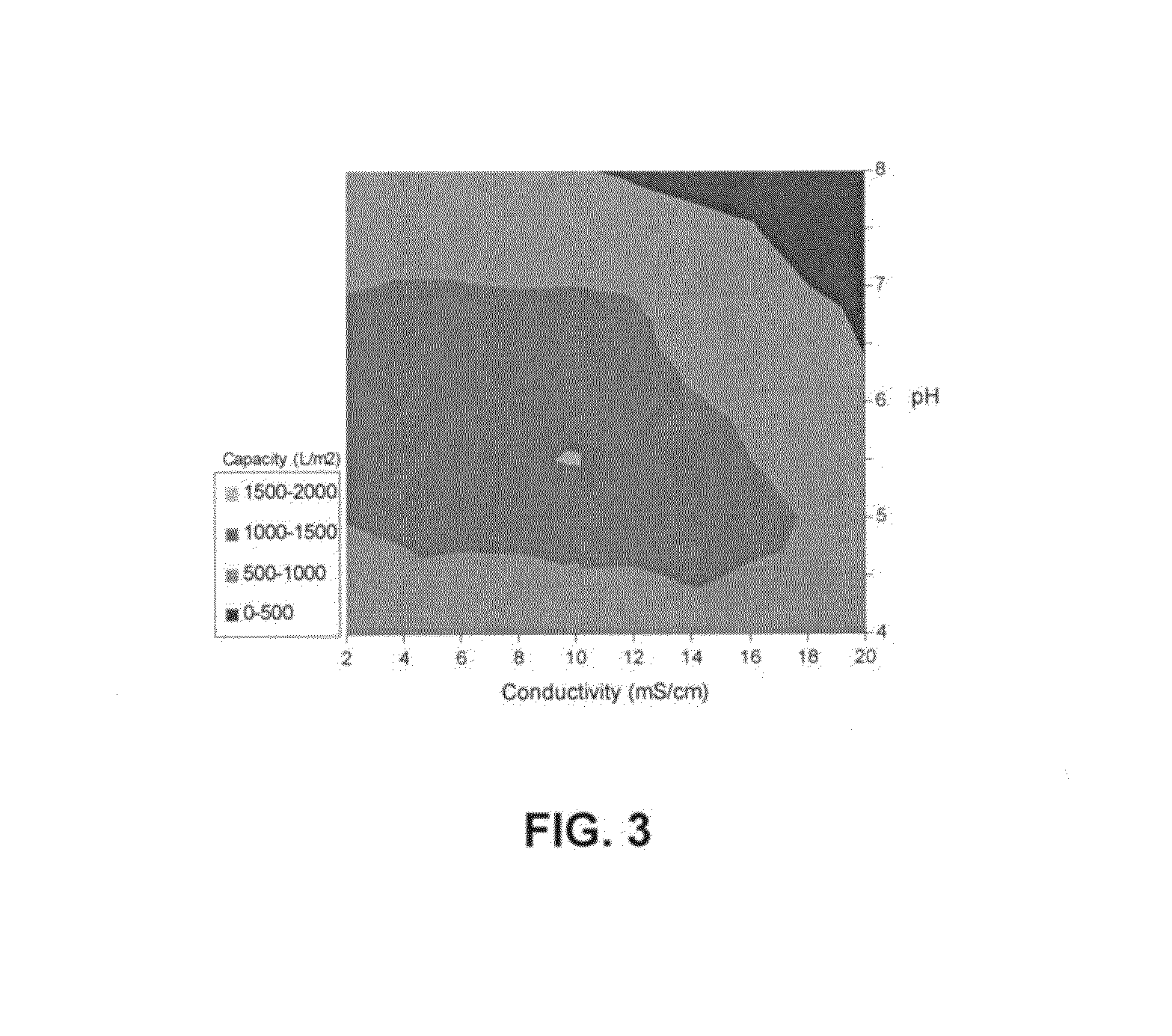Negatively charged porous medium for removing protein aggregates
a technology of protein aggregates and porous media, applied in the field of media, can solve the problems of clogging pores, affecting the filtration operation, and increasing the cost, so as to reduce the fouling and clogging, reduce the cost, and increase the throughput and flux.
- Summary
- Abstract
- Description
- Claims
- Application Information
AI Technical Summary
Benefits of technology
Problems solved by technology
Method used
Image
Examples
example 1
[0137]An aqueous solution was prepared containing 4.5 wt. % of sodium salt of 2-acrylamido-2-methylpropanesulfonic acid (AMPS-Na) and 0.9% of N,N′-methylenebisacrylamide. A hydrophilic polyethersulfone membrane with pore size rating 0.22 um (commercially available as Millipore Express® SHF) was cut into square pieces of 14 cm by 14 cm and submerged in this solution for 30 seconds to ensure complete wetting. The excess of solution was nipped off, and the membrane was exposed to 2 MRads of electron beam radiation under inert atmosphere. The membrane was subsequently rinsed with deionized water and dried in air. Three layers of this membrane were sealed into a vented polypropylene device, with membrane filtration area 3.1 cm2. The holder was connected in line to a similar device containing two layers of Viresolve® Pro parvovirus removal membrane. This device combination was first tested for permeability with acetate buffer solution and then for throughput with aggregate-containing solu...
example 2
[0138]The procedure outlined in Example 1 was followed but AMPS-Na was replaced with 4.0 wt. % of 2-acrylamido-2-methylpropanesulfonic acid (AMPS).
example 3
[0139]An aqueous solution was prepared containing 4.5 wt. % of sodium salt of 2-acrylamido-2-methylpropanesulfonic acid (AMPS-Na) and 0.9% of N,N′-methylenebisacrylamide. A hydrophobic polyethersulfone membrane with pore size rating 0.22 um (unhydrophilized precursor of Millipore Express® SHF) was cut into square pieces of 14 by 14 cm and submerged into isopropanol for 1 minute, transferred into deionized water for 5 minutes, and then submerged into the monomer solution for 3 minutes. The excess of solution was nipped off, and the membrane was exposed to 2 MRads of electron beam radiation under inert atmosphere. The membrane was subsequently rinsed with deionized water and dried in air. The testing procedure outlined in Example 1 was followed.
PUM
 Login to View More
Login to View More Abstract
Description
Claims
Application Information
 Login to View More
Login to View More - R&D
- Intellectual Property
- Life Sciences
- Materials
- Tech Scout
- Unparalleled Data Quality
- Higher Quality Content
- 60% Fewer Hallucinations
Browse by: Latest US Patents, China's latest patents, Technical Efficacy Thesaurus, Application Domain, Technology Topic, Popular Technical Reports.
© 2025 PatSnap. All rights reserved.Legal|Privacy policy|Modern Slavery Act Transparency Statement|Sitemap|About US| Contact US: help@patsnap.com



